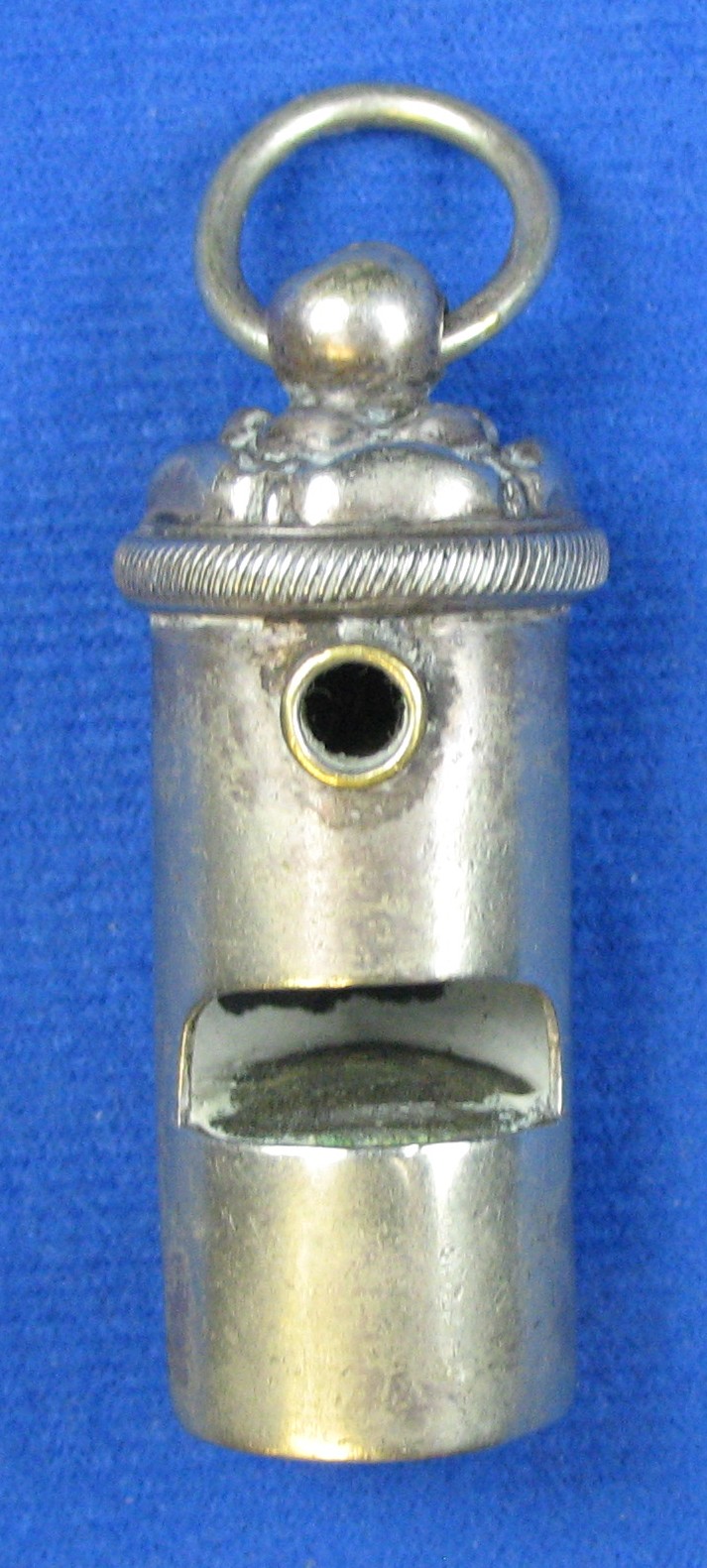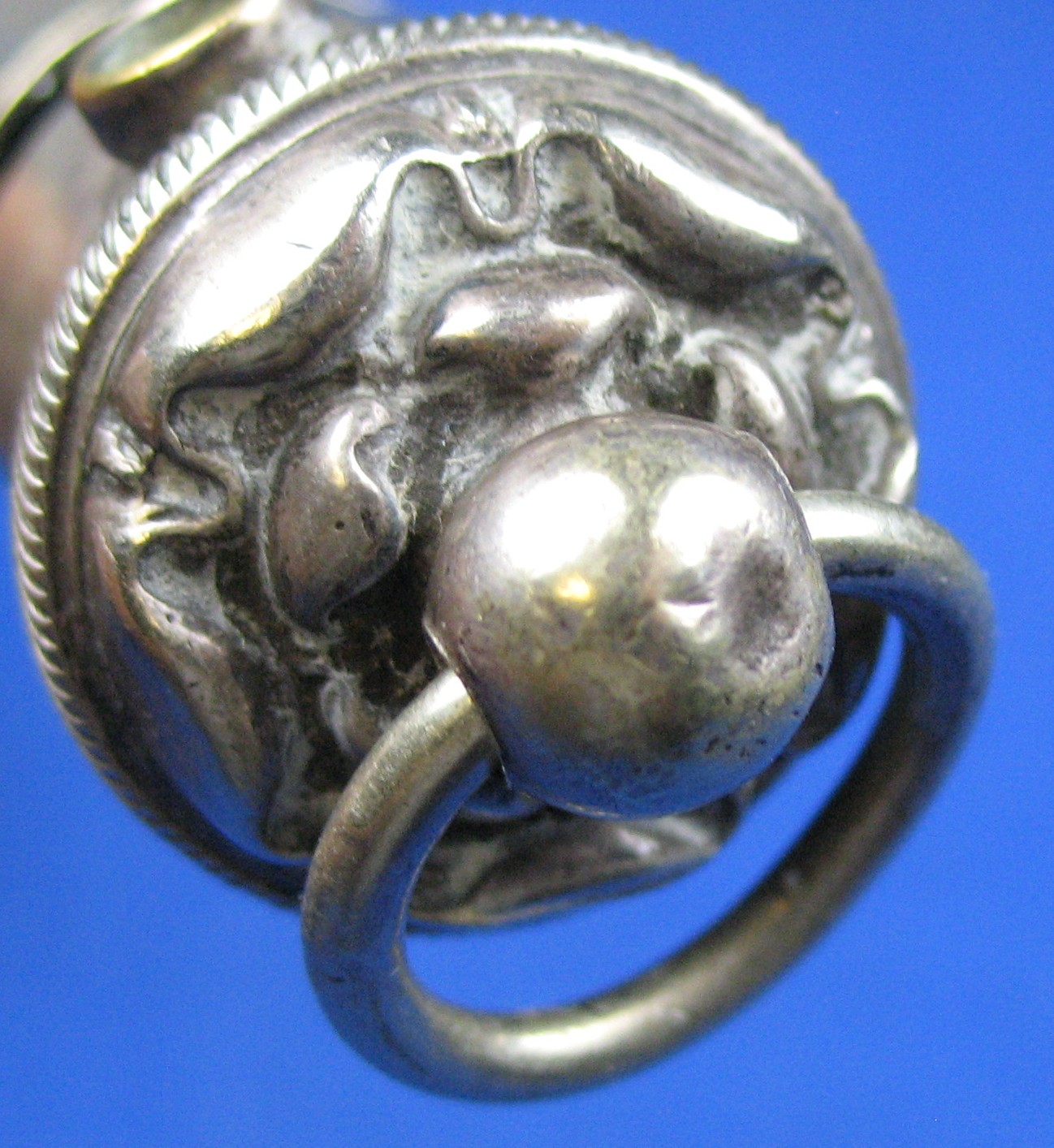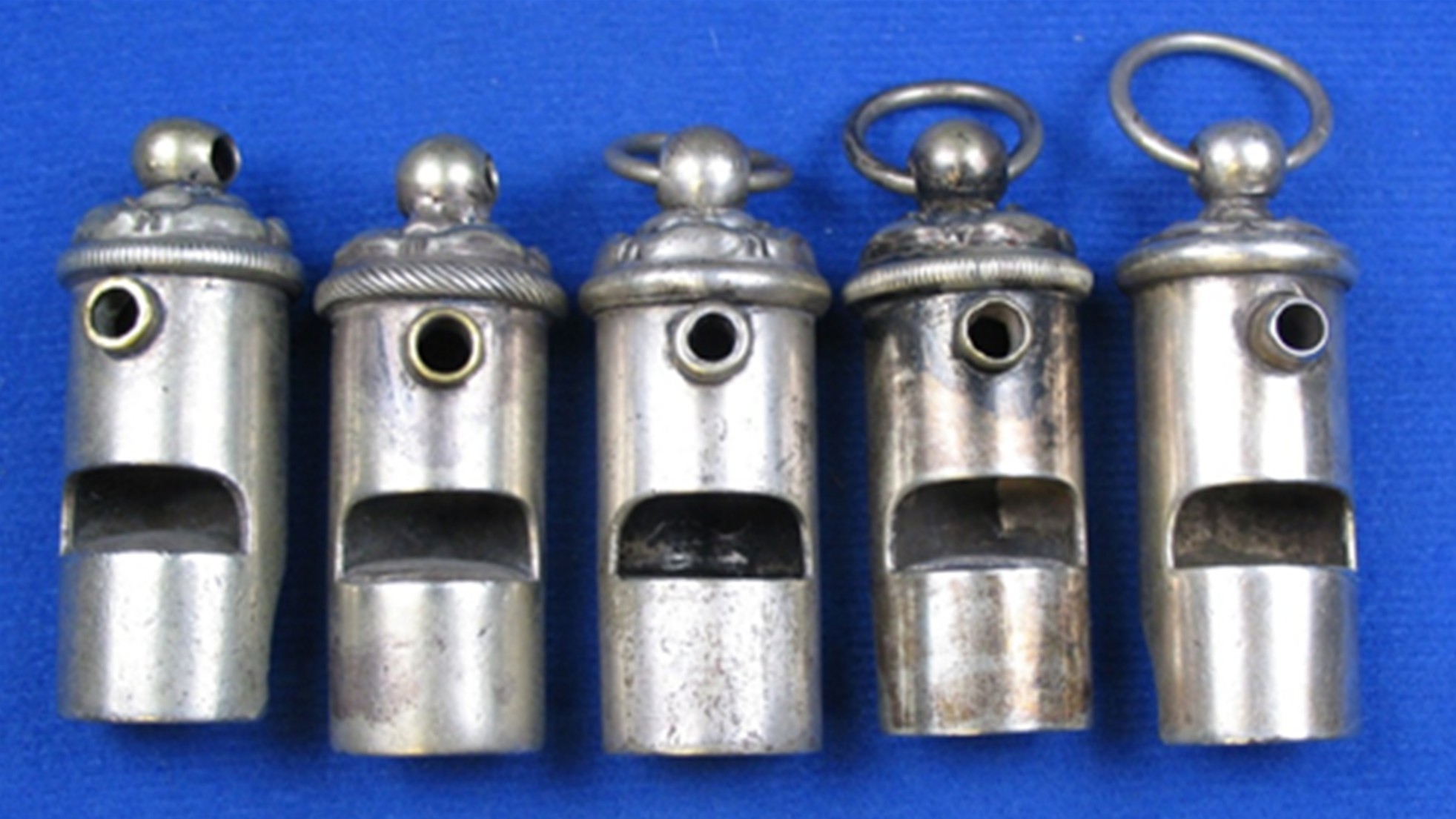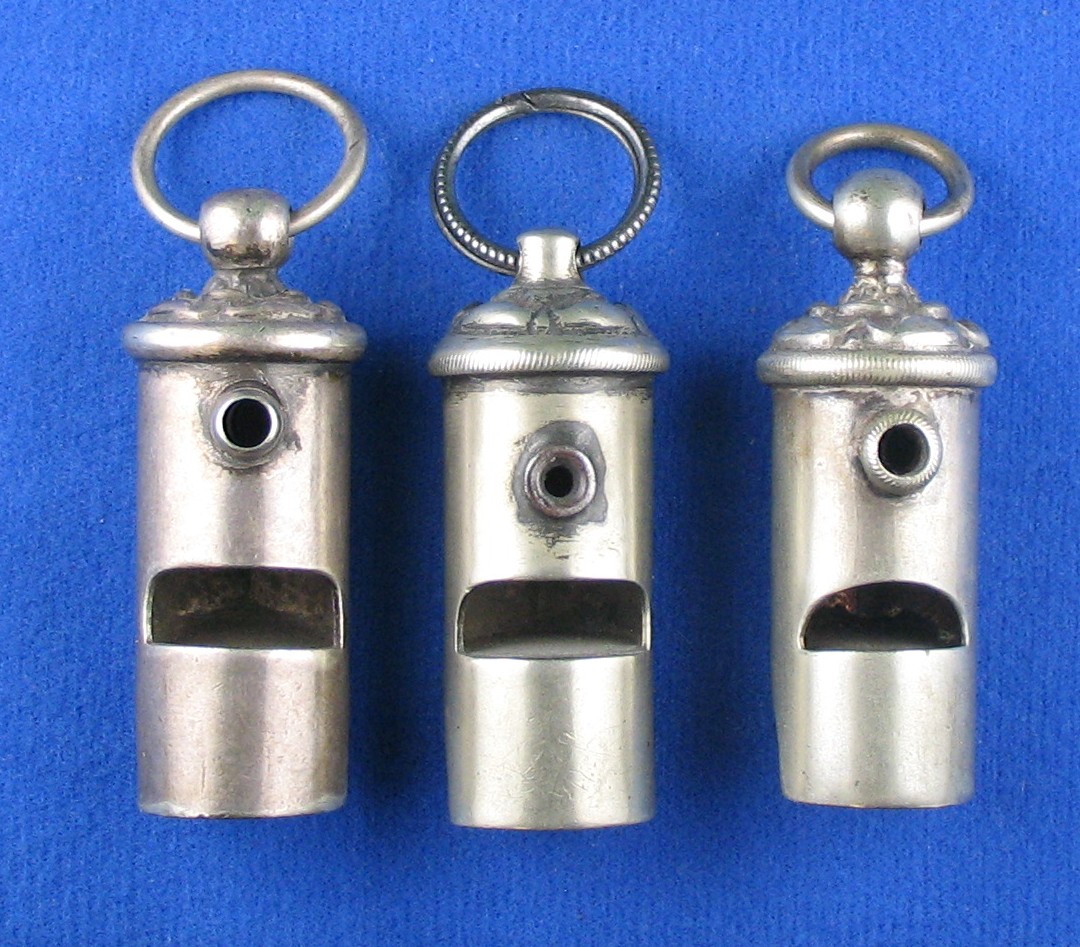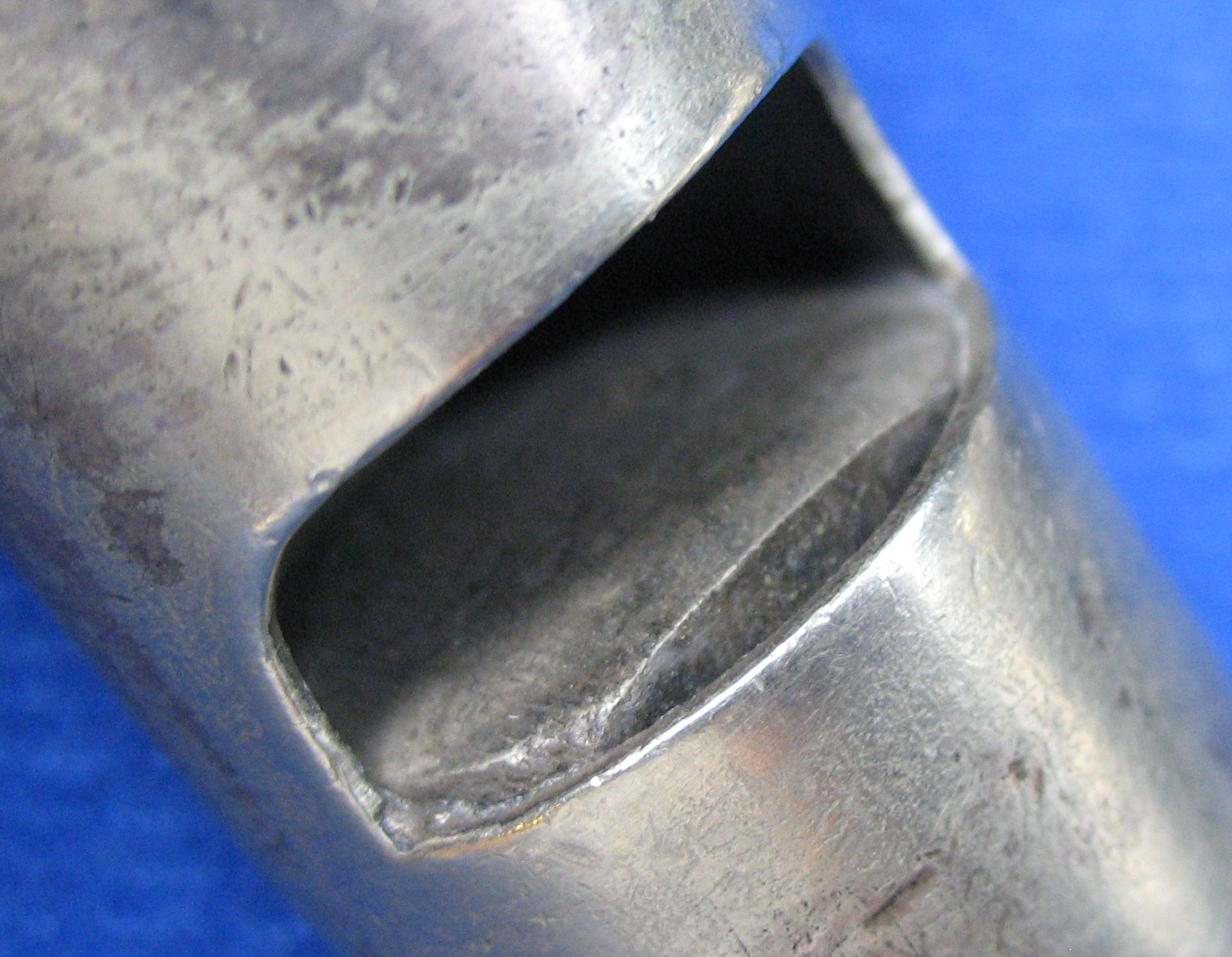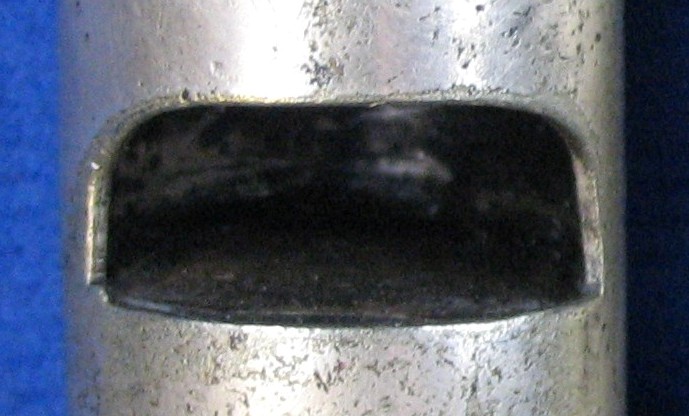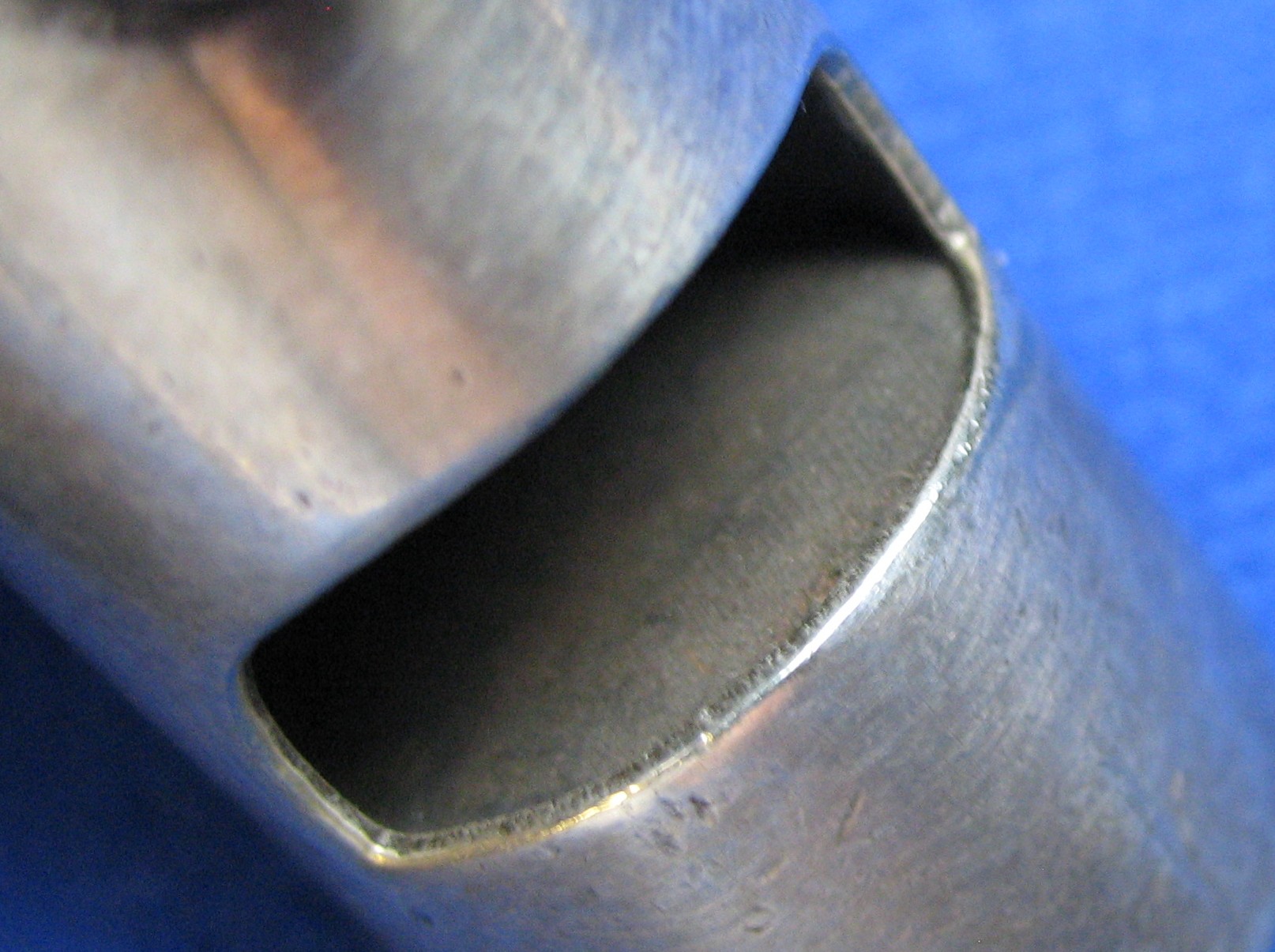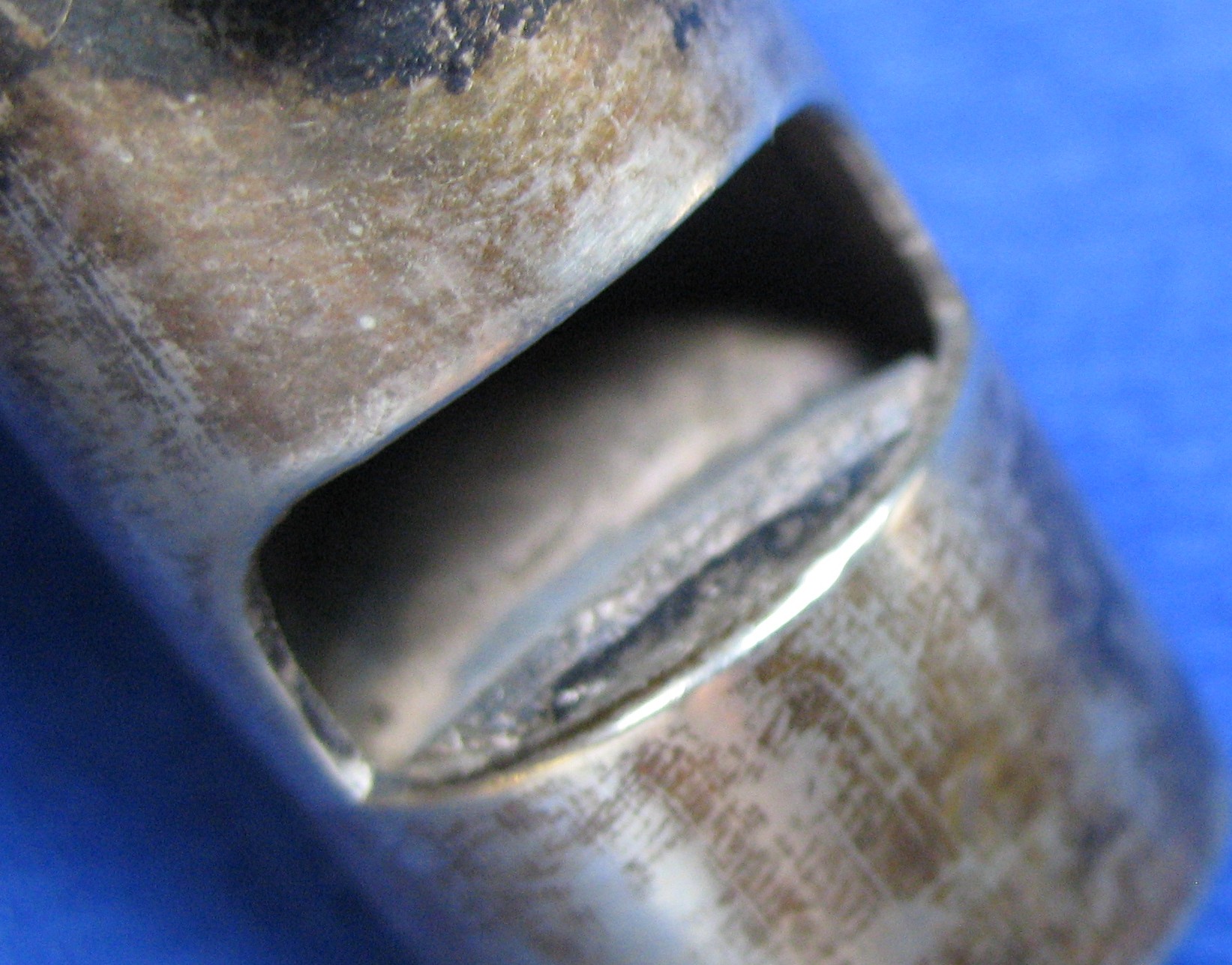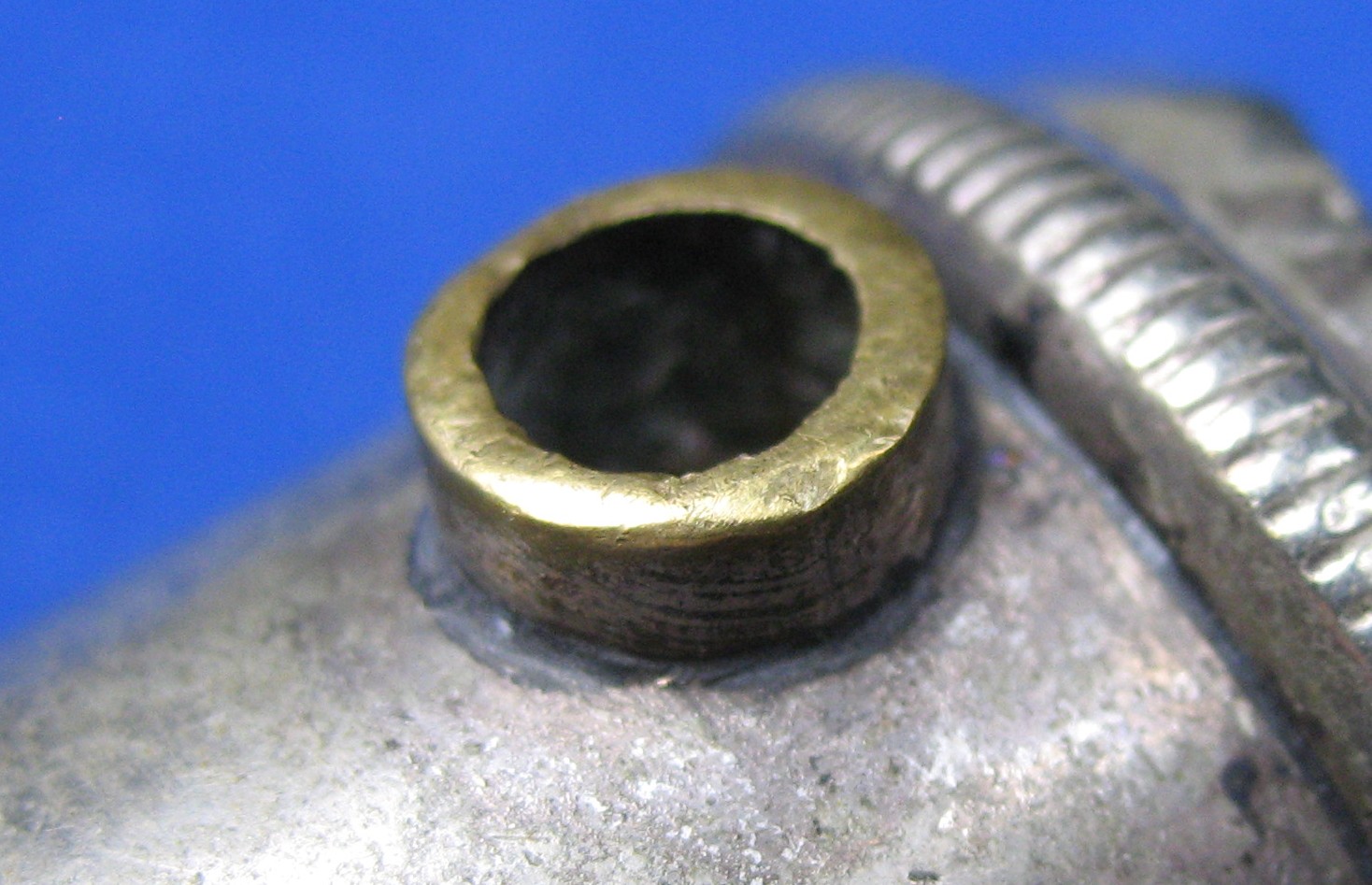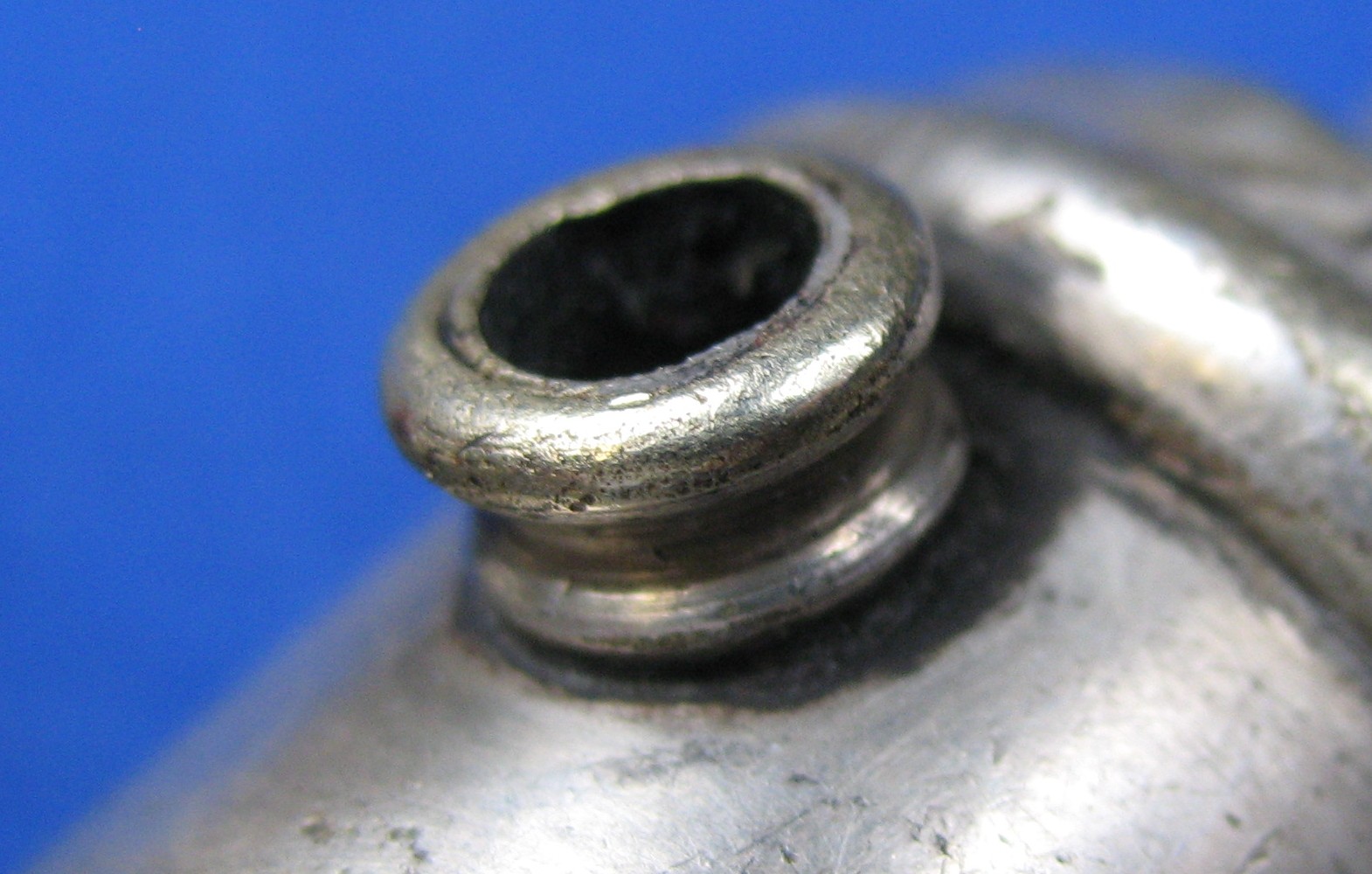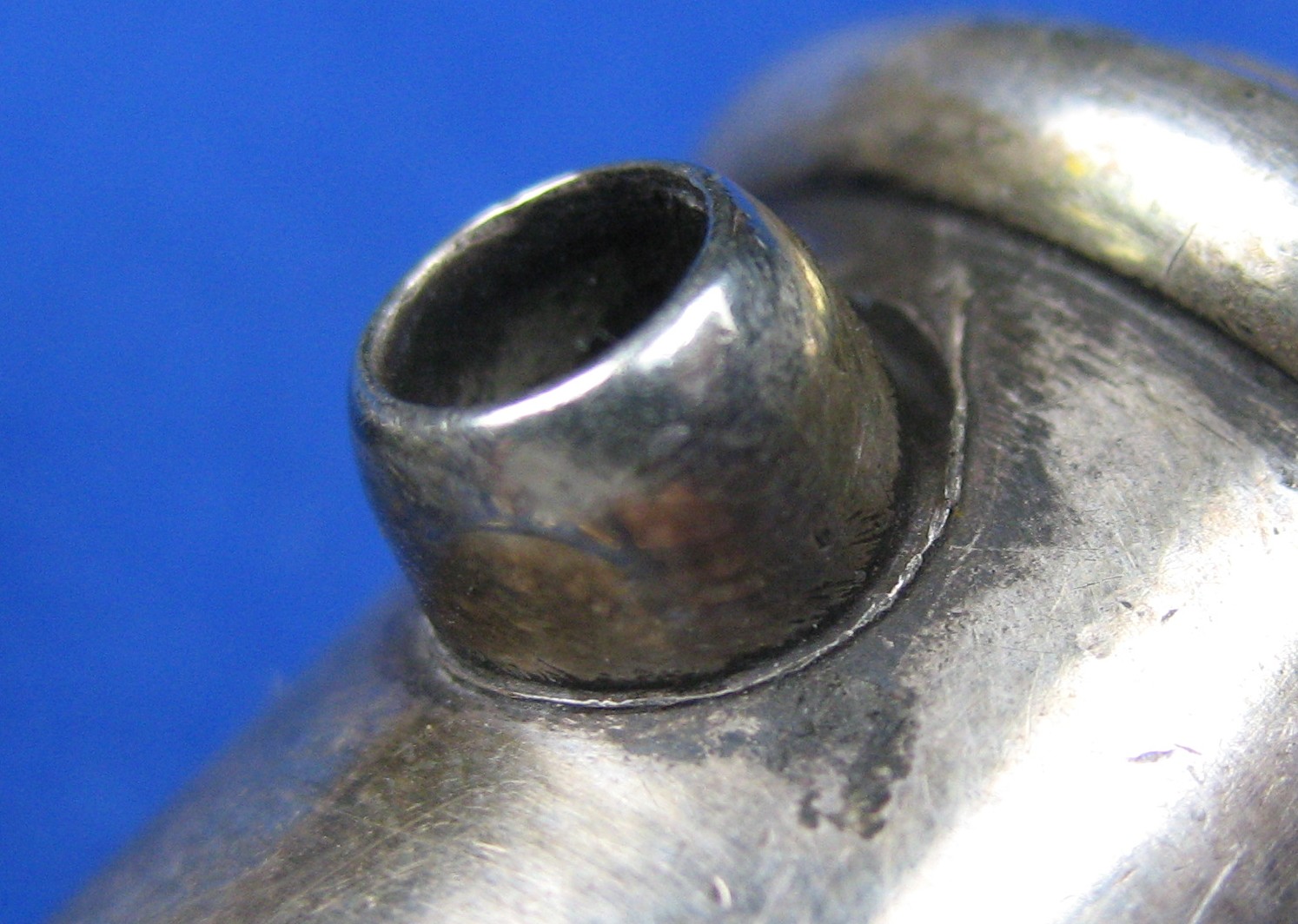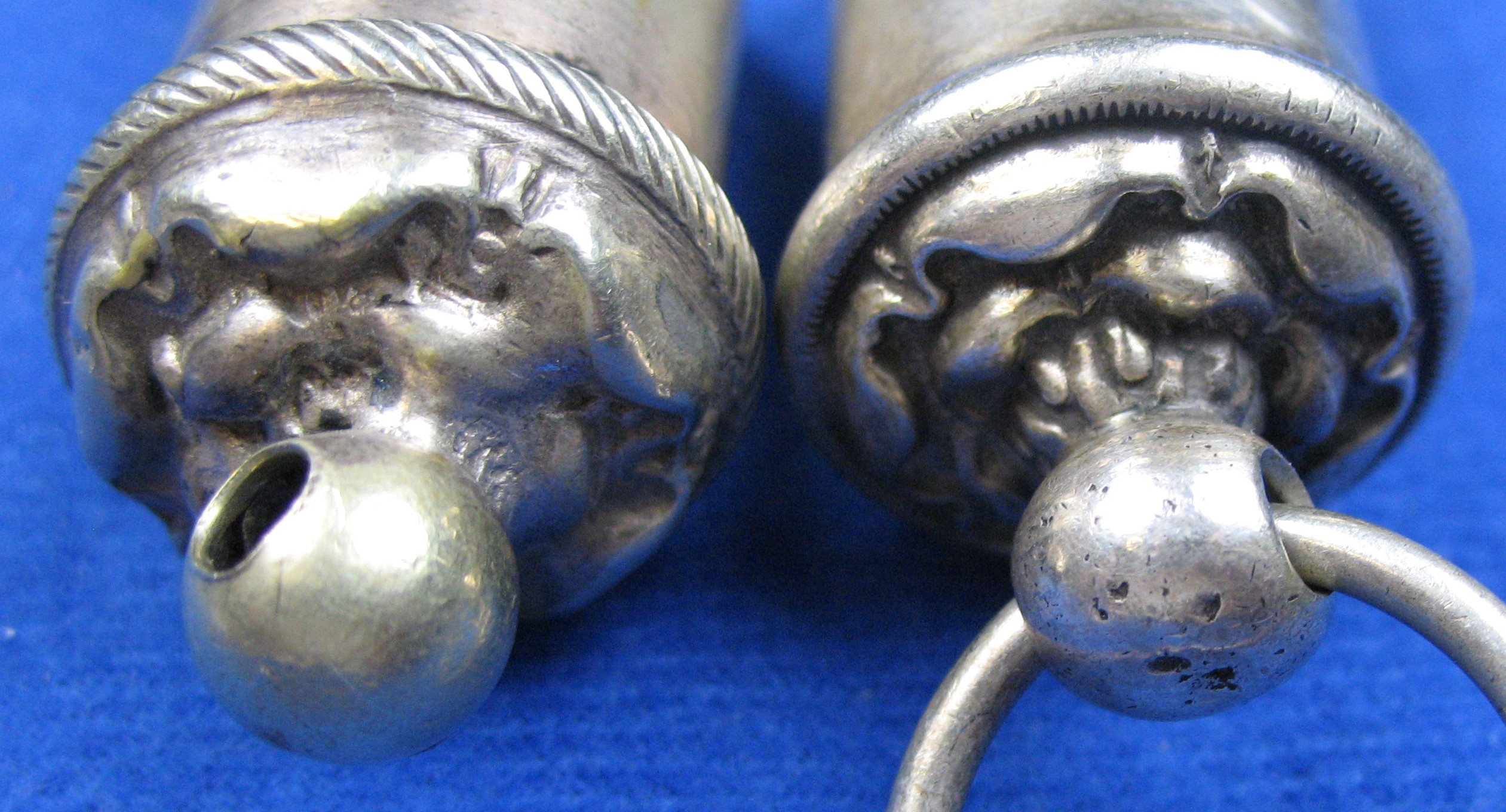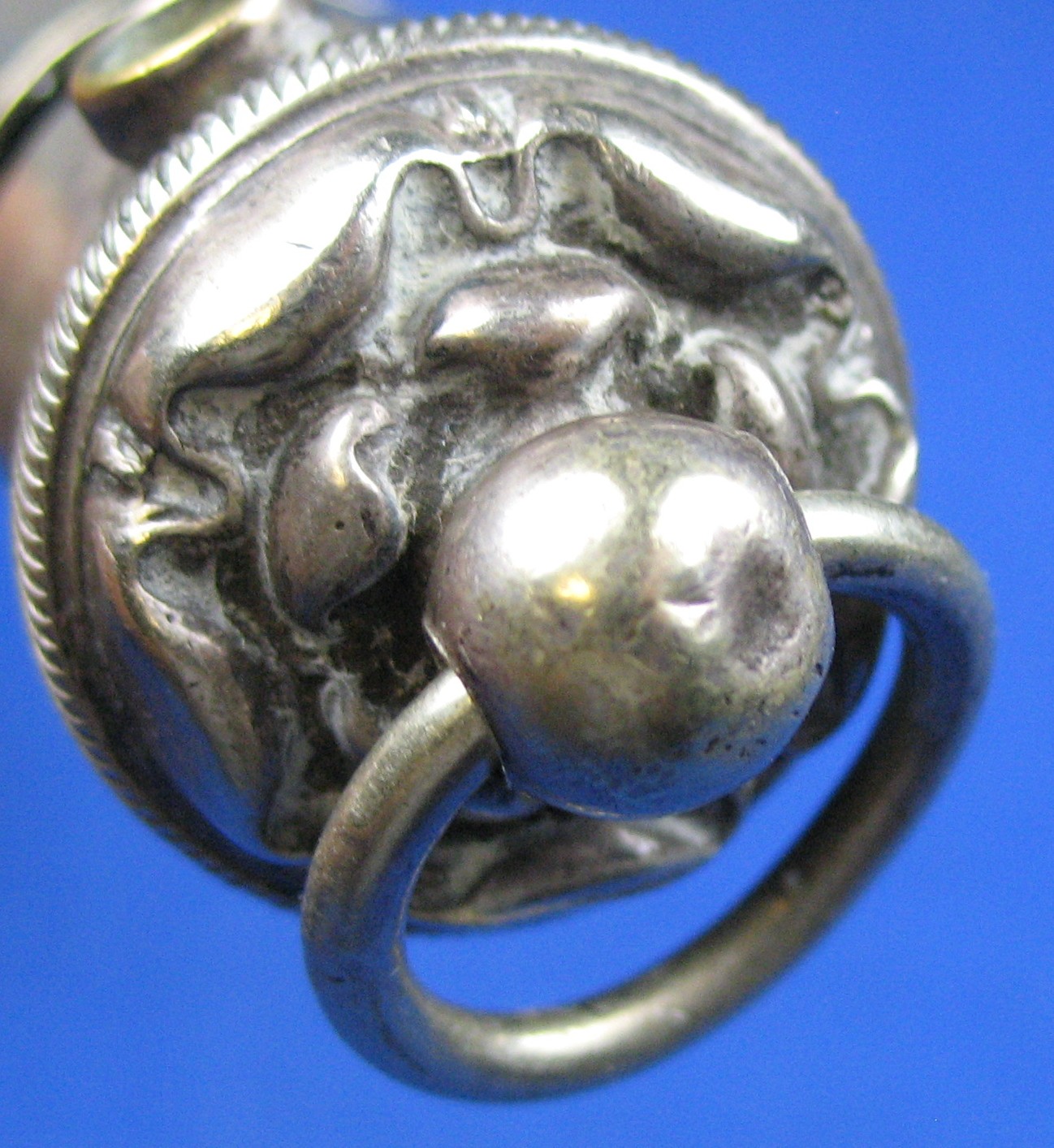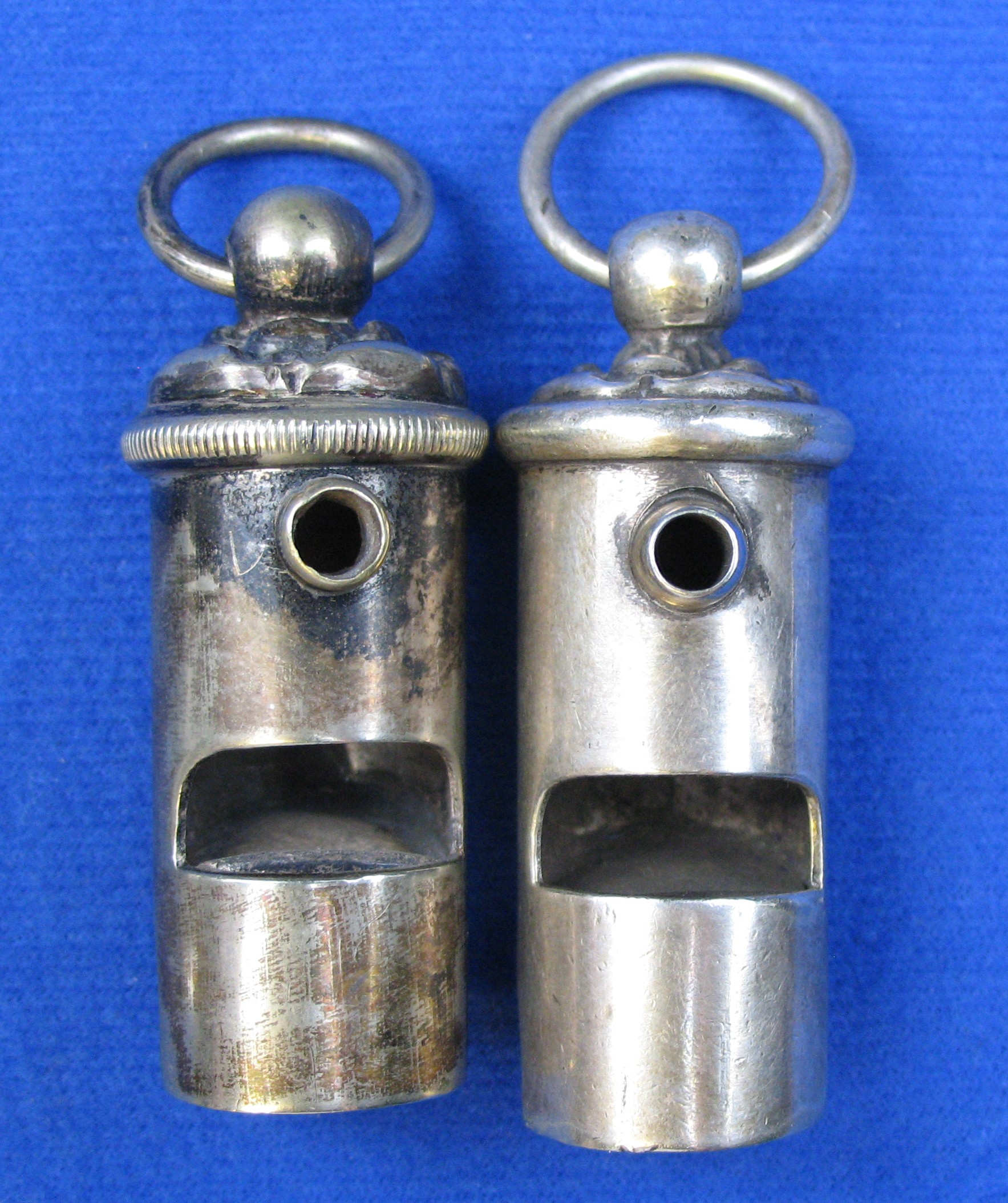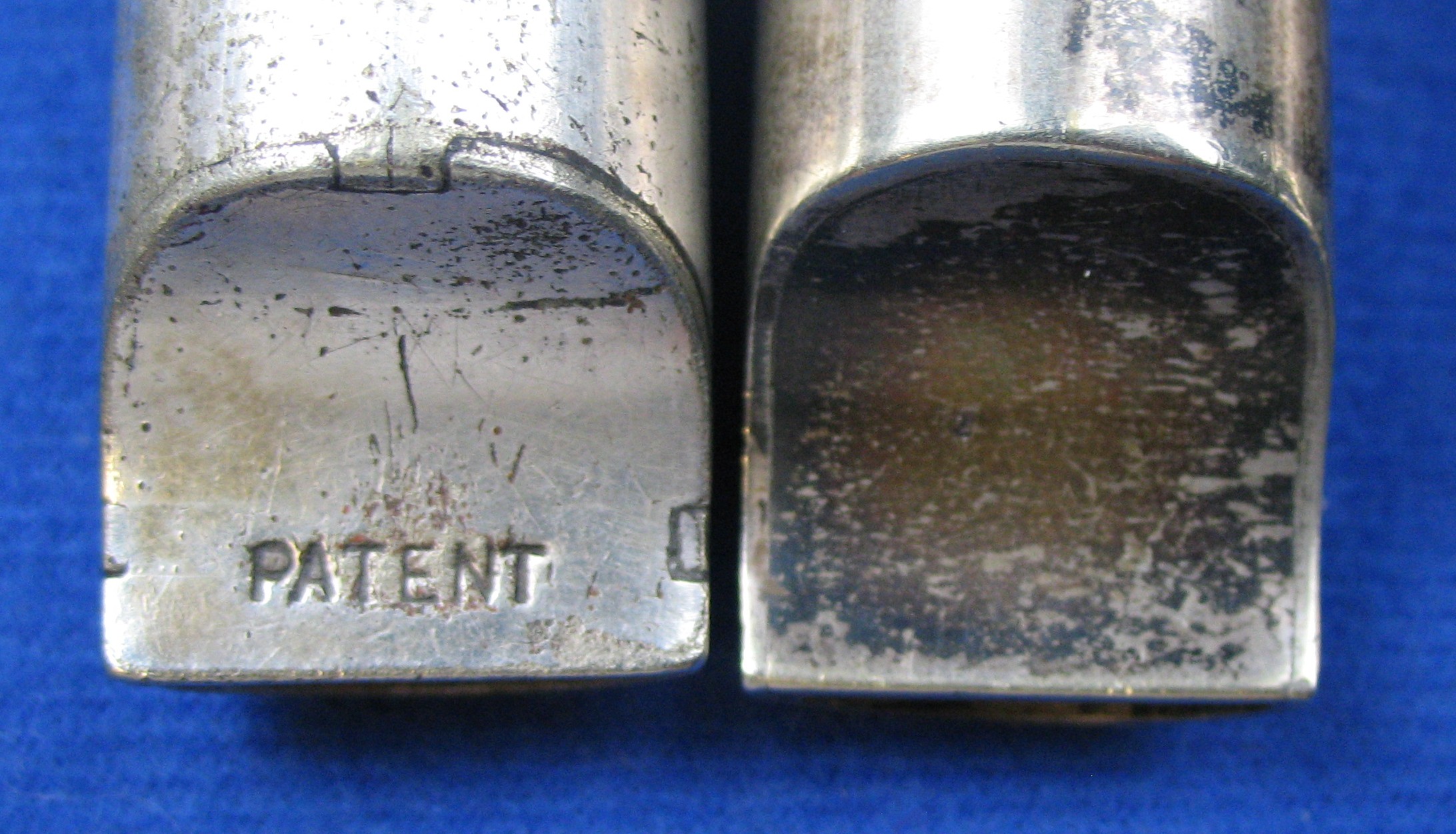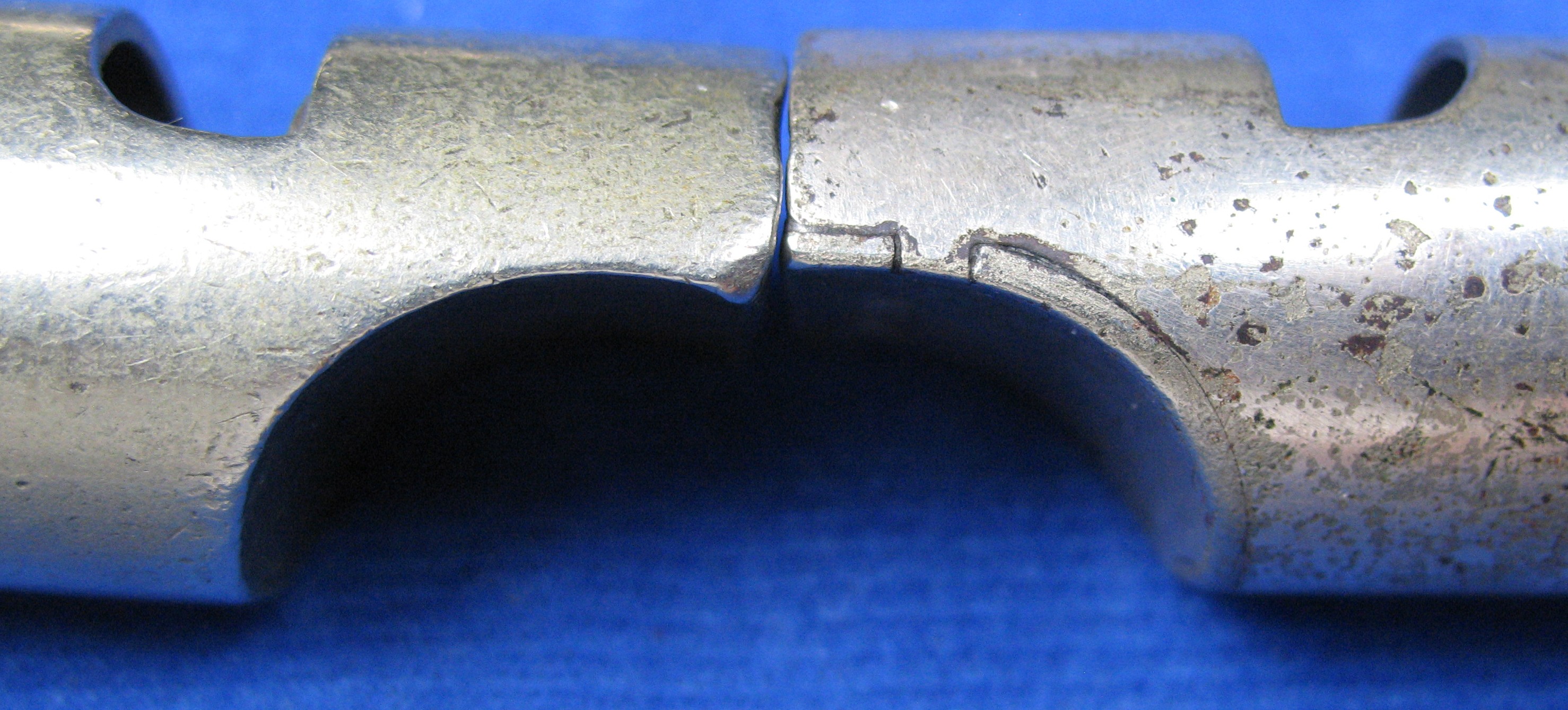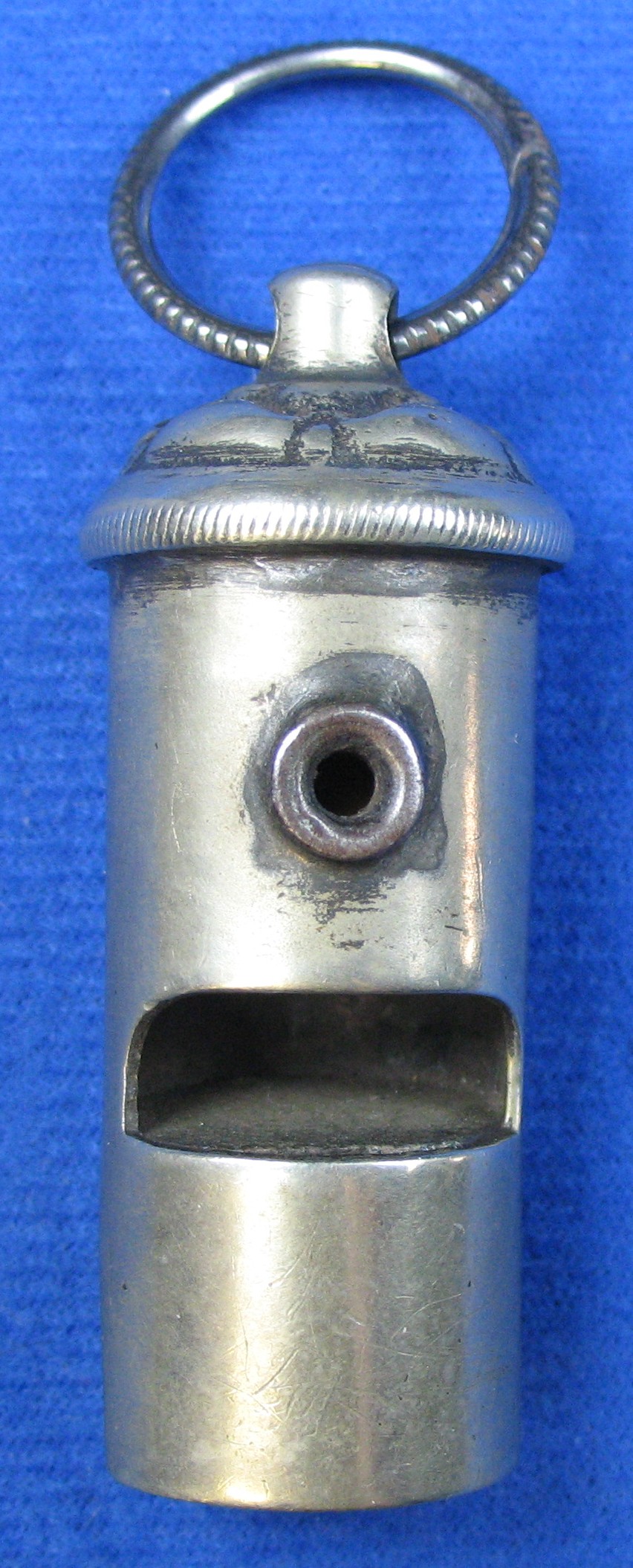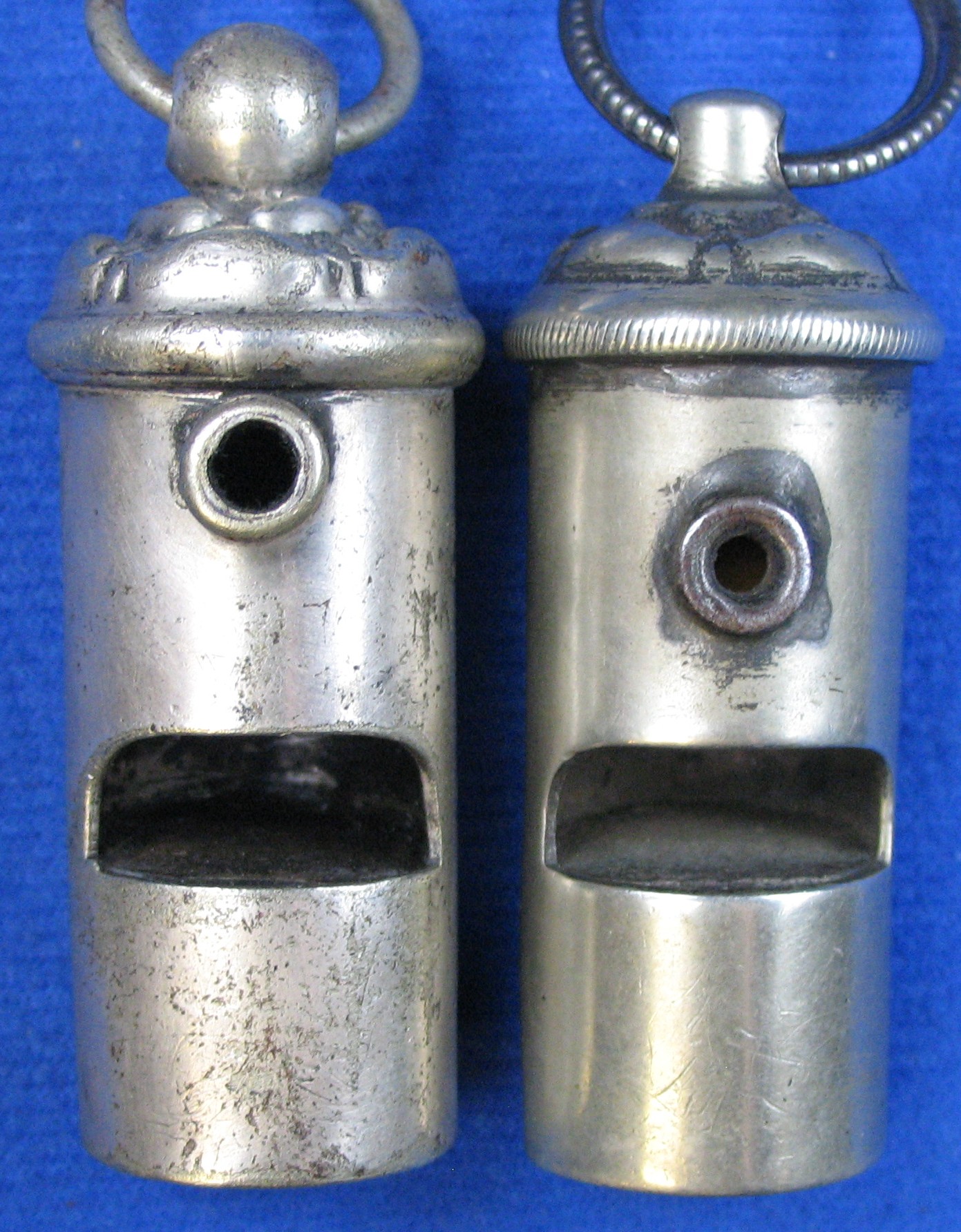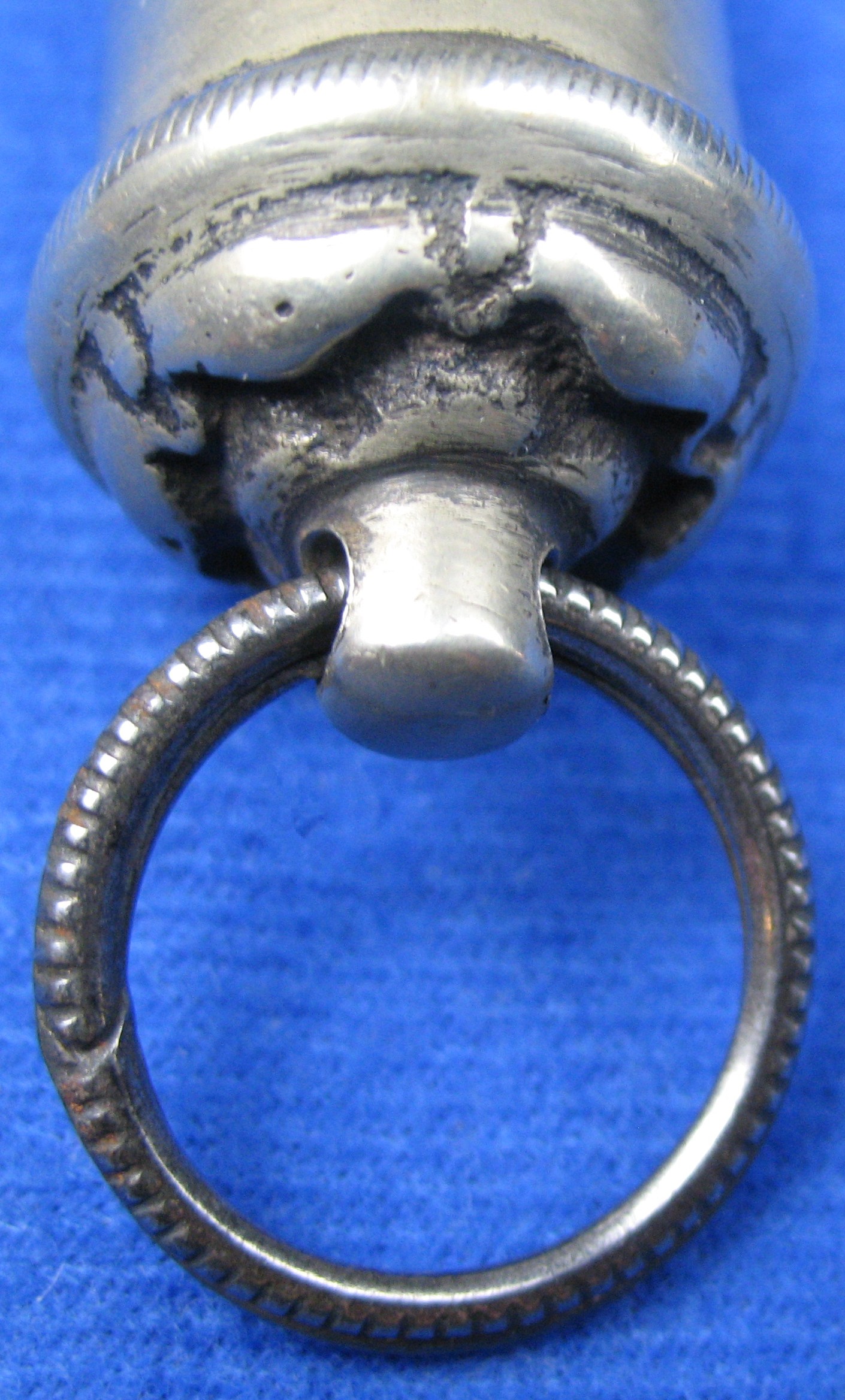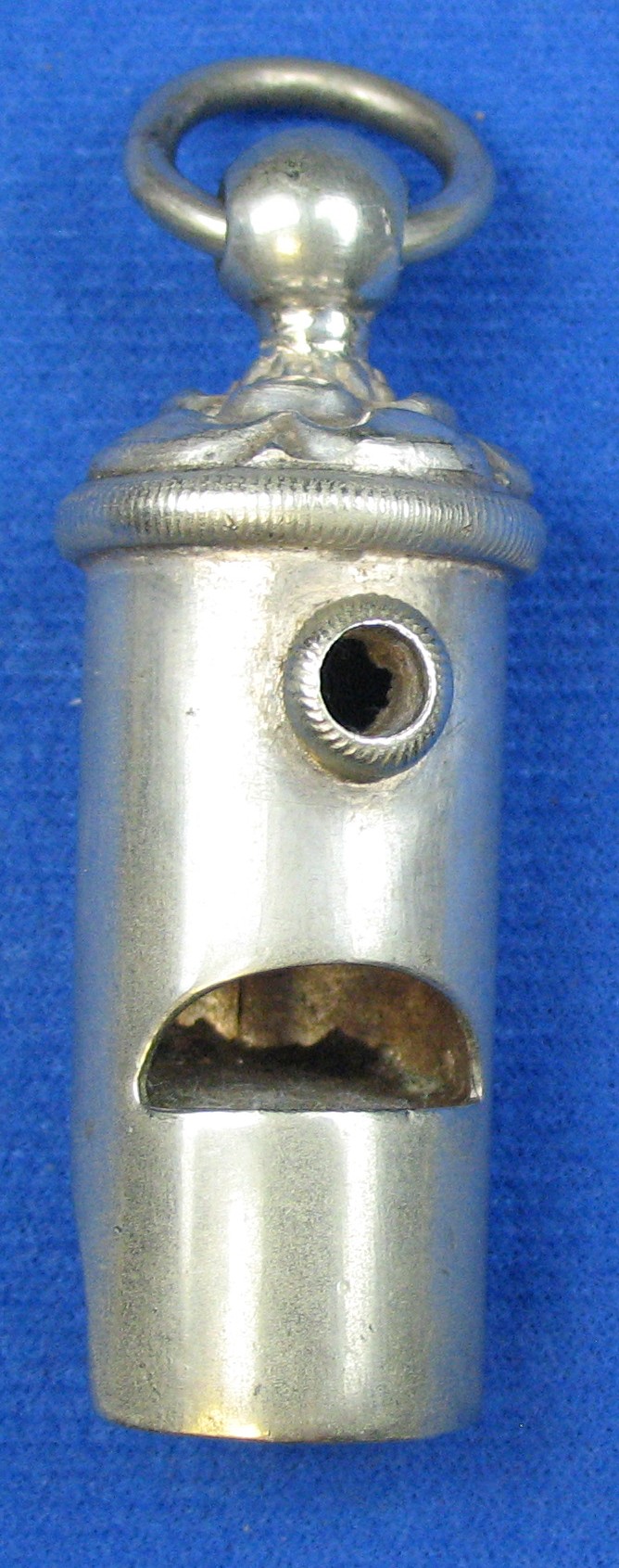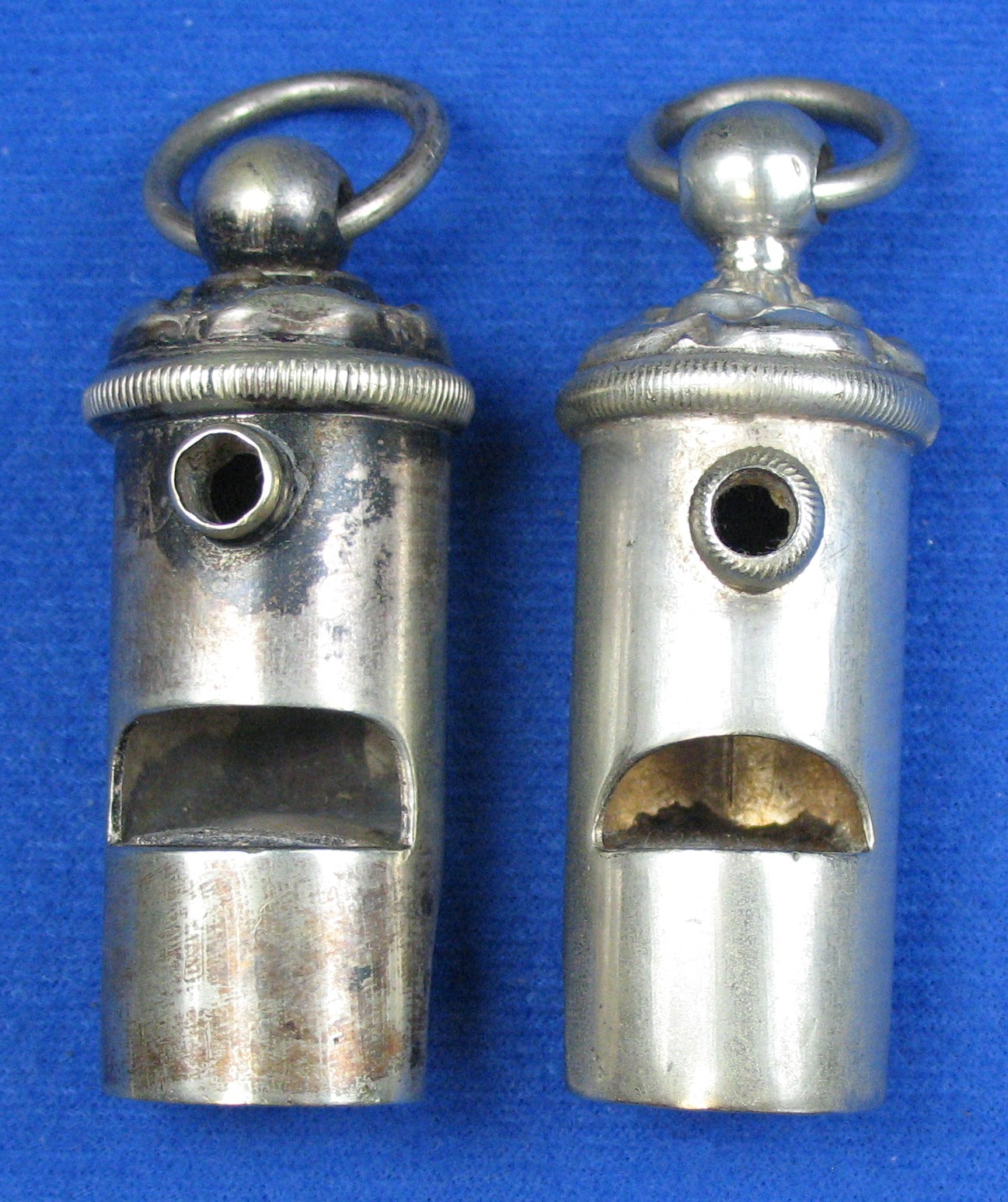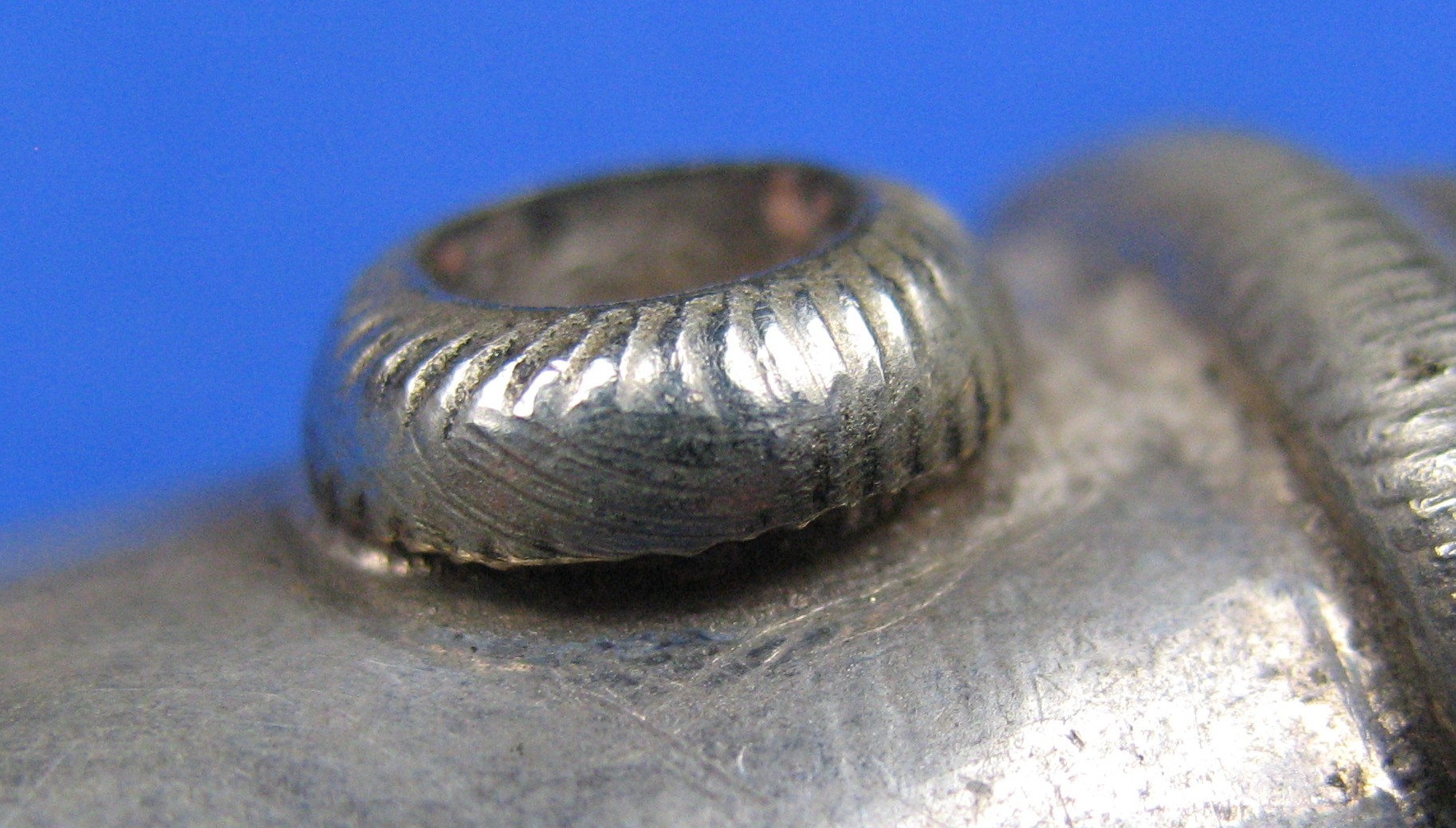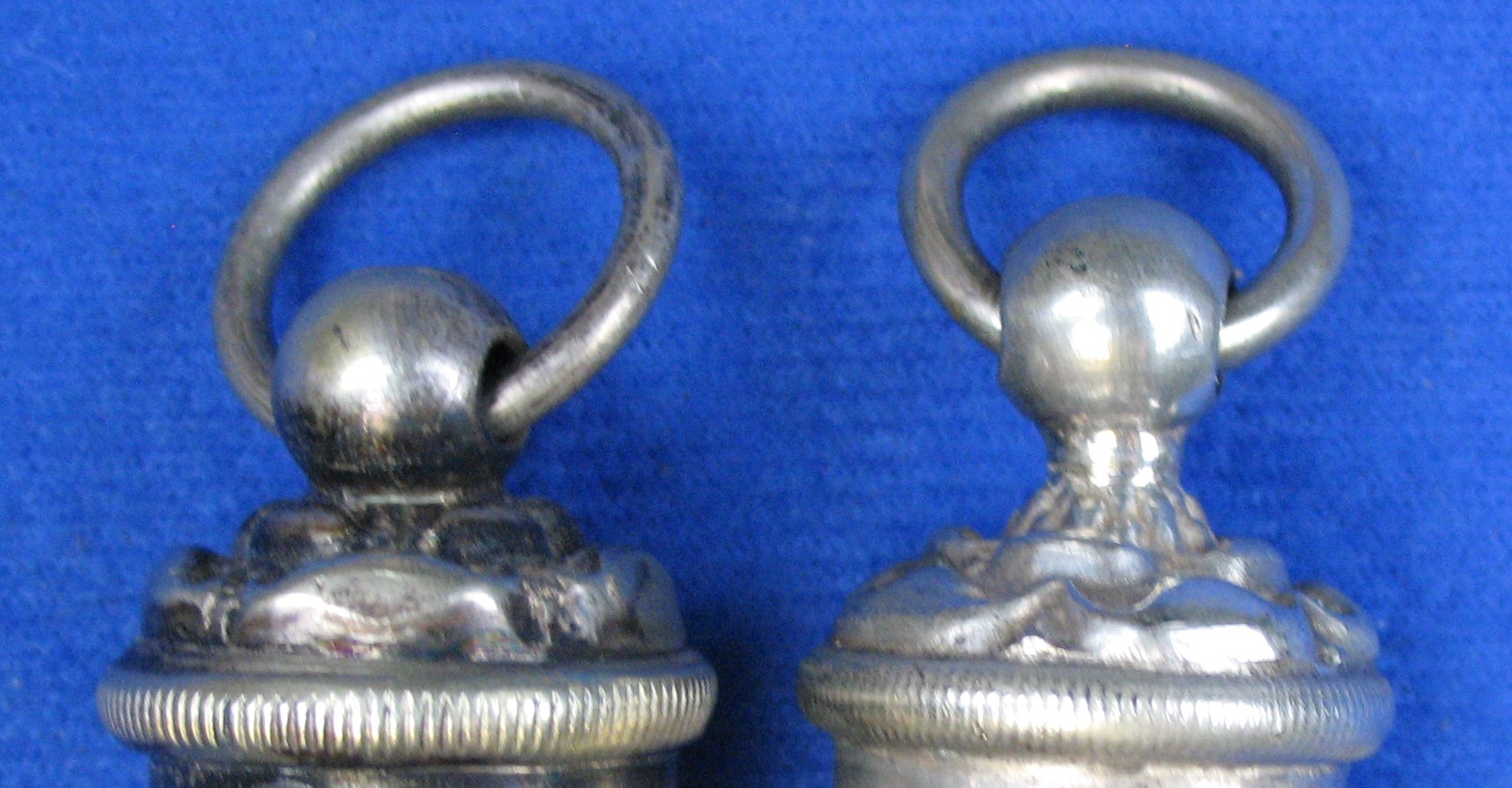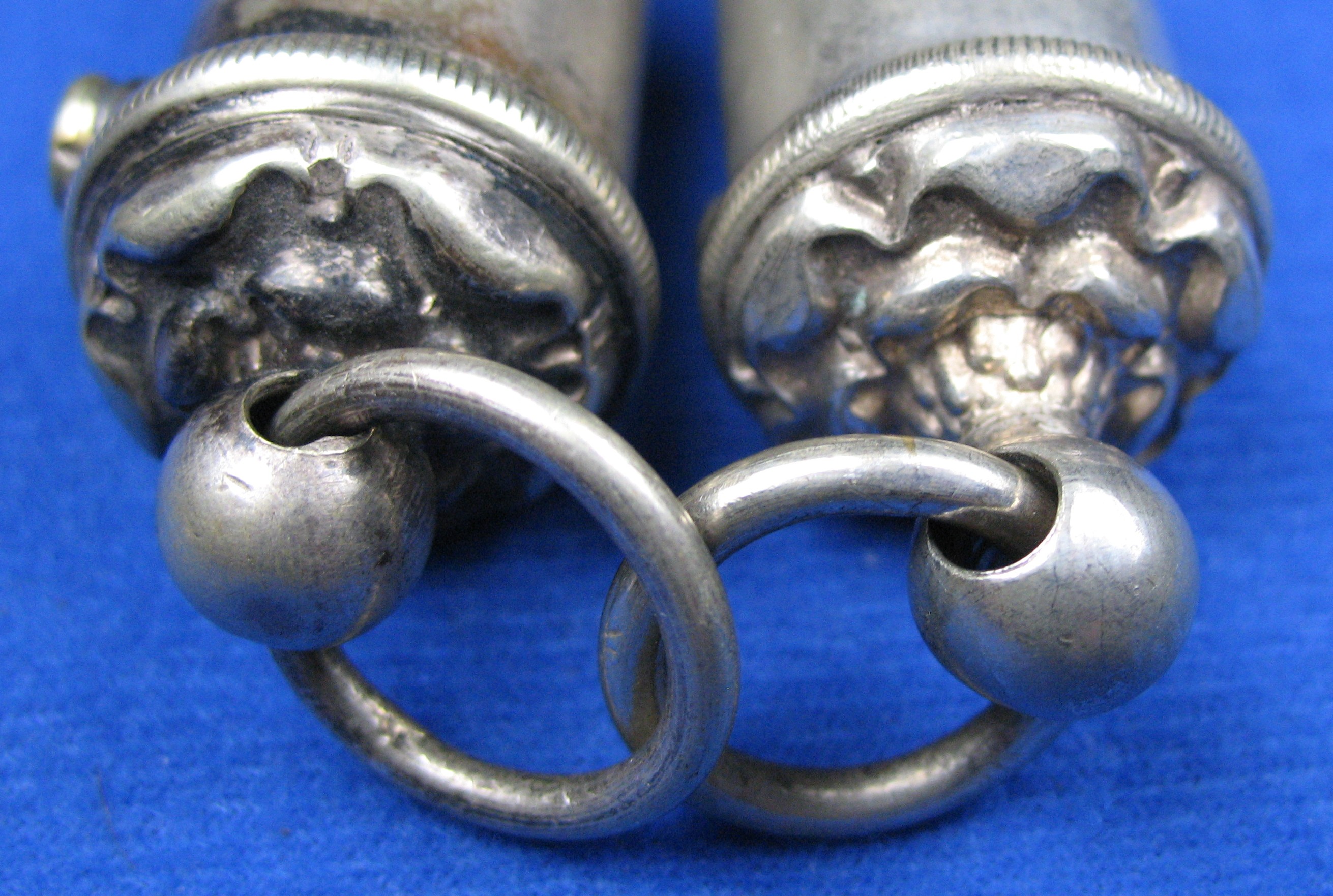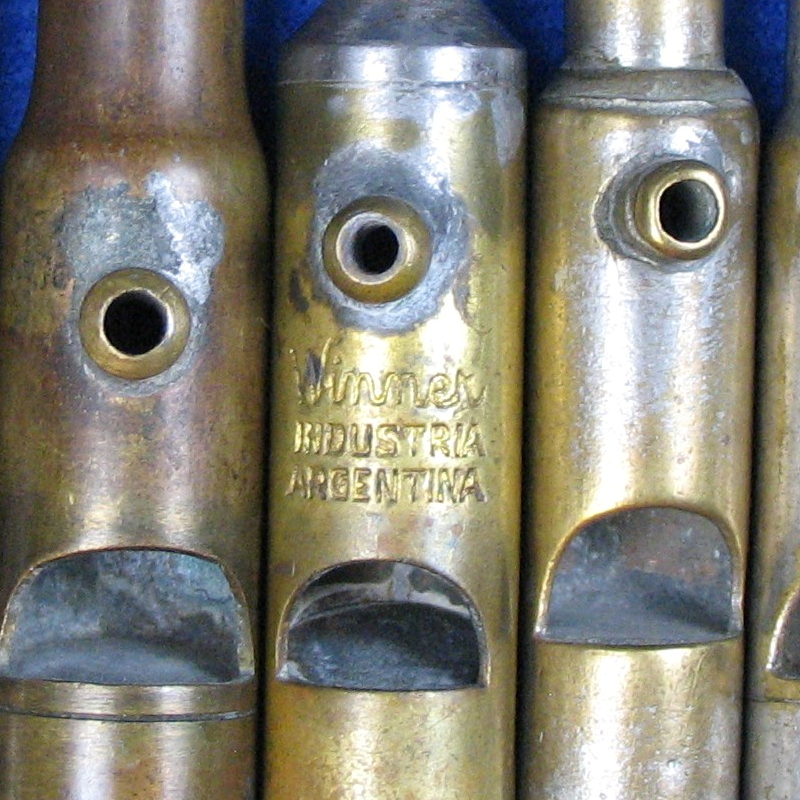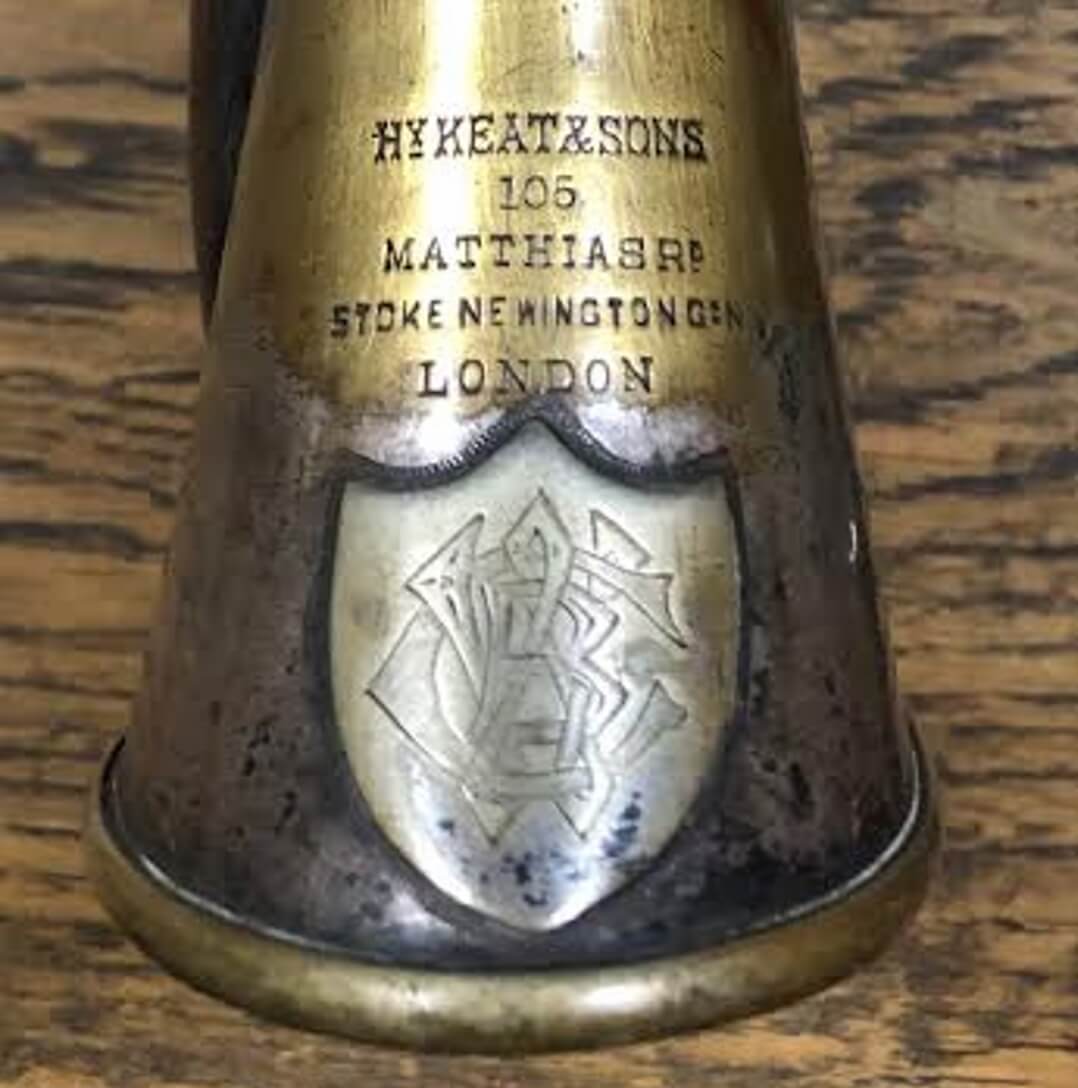Spotlight > Whistle Categories > Round > 056
Amongst round whistles is found the distinctive top of the Tudor Rose round typically attributed to Joseph Hudson from the UK. This design arguably is the most ornate production round whistle top made. Over the years we have seen some interesting variations and it has given rise here to attempting to catalog them for reference. In studying them more closely we found a remarkable area of interest that spans at least two decades.
Presented here are some notes and observations of what appear to be variations that took place over a number of years of production – perhaps 20 years long. It may be that rather than just one manufacturer involved, there may be more.
From simple variations in the pattern of the rose on the top, to internal parts, the collector and student of whistles will find it educational to track and record these variations.
So, let’s systematically compare as many as we can to get a better picture — adding to the SPOTLIGHT as we come across more information and examples to the tail end of the article.
We will look at the following:
- Fipples
- Stop holes
- Milling
- Rose patterns
- Lengths
- Dates
- Materials
Some history helps to define why it is called the Tudor Rose top cap. The Tudor Rose was an important emblem of the Tudor dynasty which marked the end of the devastating war called the War of the Roses. The national flower of England is the rose, which was adopted as England’s emblem during the War of the Roses (1455-1485).
A little history always augments memory doesn’t it ?? Group pictures further sets the stage for comparison study.
The middle whistle below is dated to a patent ( patent 553 ) from 1909. With three interlocking teeth on the fipple attachment to the whistle, it acts as a bench mark and is attributed to Hudson Whistles manufacturing at 244 Barr Street from 1908 on.
At first look, all appear to be the same and to be Hudson made so they ordinarily have been assigned to that manufacturer. However there are some significant differences to consider as we sift through the variations found to date.
First picture ( PICTURE A ) is a progressive comparison of known Hudson Tudors from the oldest pre 1909 to the 1909 patent ( 553 Hudson ). Second picture ( PICTURE B ) is some variations of possibly the manufacturers of Ward, DeCourcy or others.
Summary of variations
- Pillar top
- Reversed cut on window sides
- Diaphragms vary
- Taller neck
- Milled stop hole
- Longer whistle
- Silver used
- Smooth stop hole
- Different Rose pattern
( See last part of article for breakdowns )
Very few round whistles have as ornamental a top as these. However our first stop is going to be with the fipple/diaphragm variants.
Four kinds of diaphragms have been found so far.
We will concentrate with the contrasts between the first whistle in PICTURE B and Hudson’s typical Tudor Rose whistles. The other variants are at the end of the article.
We can start with a typical Hudson ( pre 1909 ) internal top piece of the fipple in the mouthpiece and we are calling it the diaphragm ( sometimes a cast top piece, sometimes a flat disc ) which has a straight reveal at the curvature edge making it a rough three sided edge. It is not quite as clearly defined as Stevens uses in their round whistles, however still well defined and the disc is flatter.
One notes ( PICTURE A, 2nd whistle from left to right and top pictured below ) the edge of the fipple extends around towards the front. The ‘flat’ part is actually curved convexly and slightly backwards. Compare it to the VERY flat disc on Hudson’s 1909 patent ( PICTURE A 5th from left to right and also seen bottom picture below ) and this is seen through several examples all matching Hudson.
This 2nd pic shows a disc that Hudson changed to in 1909 shifting away from a cast diaphragm. It has no single flat upward plate that is soldered into place, in other words NO angled plate directing the air upward and through the window, inside the mouth opening and soldered to the upper plate edge.
Now let’s look into two totally different Tudor Rose whistles — two completely different diaphragms from the above. One is ‘flat – ish’ and the other is dramatically concave ( previously unstudied ). Both have an angled ( typical of most rounds ) plate aimed inside the mouthpiece connecting to the inside flat plate just looked at. Is there another maker involved ?? Possibly.
The left is VERY flat, yet has a dip towards the back. It looks to be a disc but there still is an angled plate attached to the fipple to force the air up at the window which differentiates it from Hudson’s 1909 patent. Hudson doesn’t install that angled piece and looking into the mouthpiece is an empty void where air is simply pushed and not directed.
Then there is the right diaphragm which is very unique, it is actually concave ( PICTURE A, 4th from left ) . It is as if it was built for a pea to rattle around and yet no rounds with stop holes contain a pea.
The first one that is flat is semi flat PICTURE B, 1st whistle, but descends backwards, unlike any Hudson we have seen. The concave one, we have another four round whistles like it in the reference collection, so we see it was produced in production. It is not clear at this point whether this is indicative in itself of a different maker, but certainly is unusual in round whistles.
The very flat one is closest to Ward, but also is similar to DeCourcy and perhaps others, which was a surprise for us and perhaps for you as well. Someone else may well have made Tudor Rose whistles. The whistles we will see have differences in as many ways as follows:
1) fipple
2) length
3) top cap
4) top rim
5) Rose pattern
6) stop hole
7) material
So, next are the stop holes. The three similar Tudor Rose models ( PICTURE A, left ) have the same stop holes all matching the left one pictured below. The middle one has the patented mouthpiece ( Hudson 553 ), the right one is the possible Ward/DeCourcy/? round. Note the higher quality manufacturing, compared to the blunt one on the left. These early ones graduated to the middle form within an unknown period and appear on the 1909 models. Two additional stop holes were found and listed at the end of the article.
As we press on we now come to the top edge of the caps and some most interesting variations.
As you peruse the three variations you note the milling shifts from left to right. However on the 1909 Hudson and one of the variants the milling is gone altogether and is smooth and rounded.
The rose patterns themselves are similar on all three with varied millings, and inclusive of the concave fipple too.
Once again on the variants we see a few differences. Note the variants are detailed in the neck just below the round knop setting it noticeably higher. The rose pattern is well defined.
But a better look at another Hudson afterwards shows details did creep up into the neck.
Zooming in on one of the better three tops we do see detail. So the castings varied in quality. Yet the variants have details beyond the average Hudson Tudor Rose. What about that edge on the rim??
Compare the lower picture in full to the rim of the variant just below it — the rim edge is different.
Moving on is a look at the lengths. All are matching except the one, which is noticeably longer. ( The pillar top below matches the longest ) 3mm to be exact J
If we get close enough there is also a reverse curvature to the window sides, indicating Ward, who used this cut for windows, these typical wide window side ‘types’ were only used by Ward, Hudson and DeCourcy.
As to dates, of the earliest Tudor Roses ?? Ward started officially in 1889. Hudson would date earlier ( circa 1880 ) and into that period ( DeCourcy splitting off during the same period ), so we can look to circa 1890 or past and up to the ones seen with the 1909 patented three interlocking teeth on the fipples.
There are variations in the fipple curvature that can be tracked better now. 1909 on the left – both Hudson’s.
Then the right one below is the 1909.
There are variations in the materials. While one may be indicative of a manufacturer, the other is not. The single Ward/DeCourcy/? appears to be silver and all the others plated brass.
All in all quite an area of study and with much more variability than perhaps presupposed.
The Tudor Rose is not as simple as thought. It would seem that it was not only made by Hudson … and no doubt have other secrets to reveal.
A late entry ( PICTURE B middle ) You will note in this one …
- the lower stop hole and how short it is
- slightly longer than typical Hudson
- the sloping off of the top milled edge
- the rose itself is a different cast design
- Especially note the almost pillar top
First zoom into the top ‘pillar top’ the round ones vary to height and width, but this is the first we have seen of this type. Note the different rose design ?? See the lower stop hole ??
The Tudor Rose left center is 1909.
The article will be left open at the end to facilitate adding more whistles as they surface. We hope you have enjoyed this extensive and long term study of Tudor Rose whistles
— TWG
Close out by looking at the milling edge that slopes off and the short stop hole.
An even later edition in the continuing study of these variable rounds is as follows…
Several facets set this round apart from the others. First note the extended knop sitting way up high.
The stop hole is milled which has proven to be elusive on these rounds. The other thing that sets this one apart is the window. Yes, it is half round — do you see the difference in the windows ??
Lastly, another look at that Tudor rose design reveals different mold of the cast rose pattern…
— TWG
Posted March 5, 2016
